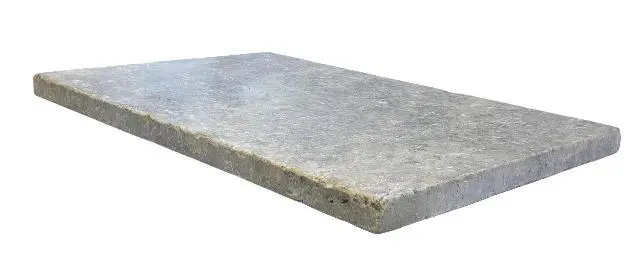Why is Pool Coping Important?
Pool coping has a number of purposes:
- Generally, the pool coping overhangs the pool slightly to assist in reducing the amount of water that splashes from the pool, saving you water and money over time.
- Pool coping will cover and protect the bond beam that makes up the shell of the pool and importantly, prevents water from getting in behind the pool shell, maintaining the integrity of the pool’s structure.
- Aesthetically, pool coping connects the pool to the surrounding outdoor space and the adjoining tiled or paved areas.
Choosing the Right Pool Coping
The choice of coping can greatly enhance of detract from the look of your project. An appropriate choice of coping can also increase the safety and comfort of pool users.
The Comfort Factor
The tiles or pavers in your landscaping will often have square cut and fairly sharp edges.
Coping pavers are usually manufactured from the same material with the addition of a shaped or profiled edge on the side that extends into the pool to overcome this.
For example, the traditional Bullnose or Pencil round coping pieces are finished so that they are less prone to “catching your Cossie” and scratching your kids as they scramble from the water at all angles. They are also less likely to chip than straight-edge finishes.
Non-Slip Pool Coping for Safety
A non-slip coping is very important. Your stone supplier will be able to provide ratings on the products they supply. High gloss and polished surfaces will rarely be appropriate as pool coping.
Stones with exfoliated, tumbled, and sandblasted surfaces provide the most fit-for-purpose solutions along with Porcelain tiles with a “grip” finish suitable for outdoor use.
Should I seal the Pool Coping?
As a general rule, the answer is yes regarding natural stone copings. Modern stone sealers will help protect the natural beauty of your stone pool coping and also protect it from salts and minerals in the pool water and surrounds.
Different sealers work best on different stones including some specifically designed to protect stone in saltwater environments.
What are the options for pool coping?
Many pool designers and pool builders prefer limestone for decking and pool coping due to its beauty and lasting durability.
Sareen Stone’s pool coping
Sareen Stone provides three natural stone options suitable for pool coping:
Option 1: Pencil Edge
The Pencil edge finish looks square from the front but has a rounded edge on the top edge or top and bottom edge of the stone.
The rounding has only a small diameter like a pencil.

Option 2: Bullnose
The Bullnose edge is fully rounded on the edge of the stone. It is suitable for a more traditional or heritage pool design

Option 3: Drop Edge
Drop Edge coping is a solid piece of stone with a thicker visible drop edge than the rest of the stone. For example a 30mm piece of stone with a 70mm drop edge on the front.
These are a premium product and cleverly, can give the impression that all the stone in the project is thicker than it is. The drop edge can also cover an existing pool surround or the edge of a fiberglass pool in particular projects, providing a modern update and a brand-new look.

Option 4: 45 Degree Mitre Joint
This form of drop-down coping is made by cutting and joining 2 tiles or pavers (usually with epoxy glue) to create the coping.
It is commonly used to create coping from thinner porcelain tiles.

Option 5: Square Edge Coping
If there are budget constraints, a cost-effective type of pool coping is to use a stone paver in its natural form as the pool edging.
This can work best with tumbled stone pavers. The edges have been slightly rounded by the tumbling process, providing a narrower look and finish to the edge of the pool coping.

More from the Sareen Stone Pool Hub
For more information about Pools, read these articles from our Learning Hub:
